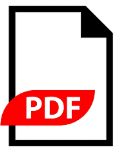Žana Juvan and Klemen Pečnik
ABSTRACT
The natural language of the d/Deaf is sign language, which is
characterised by its visual-gestural modality and its comprehen-
sive grammatical system. Despite their richness, sign languages
face significant challenges in terms of documentation and the
availability of support materials, such as high-quality dictionar-
ies. Modern multimedia technologies offer promising solutions
for a better representation of the spatio-temporal content of sign
languages, however, there is a notable lack of empirical testing
and evaluation with target groups.
This paper explores the key features of multimedia sign lan-
guage dictionaries, focusing on the importance of empirical test-
ing with target audiences to improve accessibility and usability.
It examines the history and development of sign language dictio-
naries.
It also emphasises the importance of user-centred design in the
development of effective sign language dictionaries. It addresses
the technical and social challenges and emphasises the need for
comprehensive user evaluations that include all target groups.
By integrating user-centred design principles with a particular
focus on target user testing, developers can create resources that
are not only technically advanced, but also culturally sensitive
and user-friendly to ultimately promote inclusion and bridge the
communication gaps between d/Deaf and hearing people.

